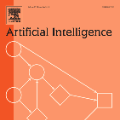Artificial Intelligence (AI) weather prediction (AIWP) models often produce "blurry" precipitation forecasts that overestimate drizzle and underestimate extremes. This study provides a novel solution to tackle this problem -- integrating terrain-following coordinates with global mass and energy conservation schemes into AIWP models. Forecast experiments are conducted to evaluate the effectiveness of this solution using FuXi, an example AIWP model, adapted to 1.0-degree grid spacing data. Verification results show large performance gains. The conservation schemes are found to reduce drizzle bias, whereas using terrain-following coordinates improves the estimation of extreme events and precipitation intensity spectra. Furthermore, a case study reveals that terrain-following coordinates capture near-surface winds better over mountains, offering AIWP models more accurate information on understanding the dynamics of precipitation processes. The proposed solution of this study can benefit a wide range of AIWP models and bring insights into how atmospheric domain knowledge can support the development of AIWP models.
翻译:暂无翻译




